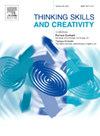Exploring and validating the componential model of students’ scientific critical thinking in science education
IF 4.5
2区 教育学
Q1 Social Sciences
引用次数: 0
Abstract
Critical thinking (CT) is an essential 21st-century skill and a key competence. In recent years, the importance of scientific critical thinking (SCT) in scientific literacy has been increasingly emphasized in science education. However, the SCT componential model has not been thoroughly explored or empirically tested. Based on an exploratory sequential design, an inductive content analysis was conducted from the descriptions of SCT-related literature to construct a componential model of SCT, which was validated through expert focus group interviews. Subsequently, survey data on SCT were collected from 1041 high school students in China. The subcomponents (1) scientific critical thinking skills (SCTS), (2) scientific critical thinking dispositions (SCTD), and (3) scientific critical thinking background knowledge (SCTBK) were quantitatively validated using exploratory and confirmatory factor analyses. The questionnaire related to these three components of SCT had satisfactory reliability and validity, demonstrating the compositional nature of the model. Finally, we developed a compositional model including three components and 11 subcomponents. The SCT componential model provides detailed conceptual indicators for each subcomponent, providing a theoretical basis for measuring SCT.
探索和验证科学教育中学生科学批判性思维的构成模式
批判性思维(Critical Thinking,CT)是 21 世纪的一项基本技能和关键能力。近年来,科学教育越来越强调科学批判性思维(SCT)在科学素养中的重要性。然而,SCT 要素模型尚未得到深入探讨和实证检验。基于探索性顺序设计,我们对与 SCT 相关的文献描述进行了归纳性内容分析,构建了 SCT 要素模型,并通过专家焦点小组访谈对该模型进行了验证。随后,收集了 1041 名中国高中生的 SCT 调查数据。通过探索性和确认性因子分析,定量验证了(1) 科学批判性思维技能(SCTS)、(2) 科学批判性思维处置(SCTD)和(3) 科学批判性思维背景知识(SCTBK)这三个子要素。与这三个 SCT 要素相关的问卷具有令人满意的信度和效度,证明了该模型的组成性质。最后,我们建立了一个包括三个成分和 11 个子成分的成分模型。SCT 成分模型为每个子成分提供了详细的概念指标,为测量 SCT 提供了理论基础。
本文章由计算机程序翻译,如有差异,请以英文原文为准。
求助全文
约1分钟内获得全文
求助全文
来源期刊

Thinking Skills and Creativity
EDUCATION & EDUCATIONAL RESEARCH-
CiteScore
6.40
自引率
16.20%
发文量
172
审稿时长
76 days
期刊介绍:
Thinking Skills and Creativity is a new journal providing a peer-reviewed forum for communication and debate for the community of researchers interested in teaching for thinking and creativity. Papers may represent a variety of theoretical perspectives and methodological approaches and may relate to any age level in a diversity of settings: formal and informal, education and work-based.
 求助内容:
求助内容: 应助结果提醒方式:
应助结果提醒方式:


